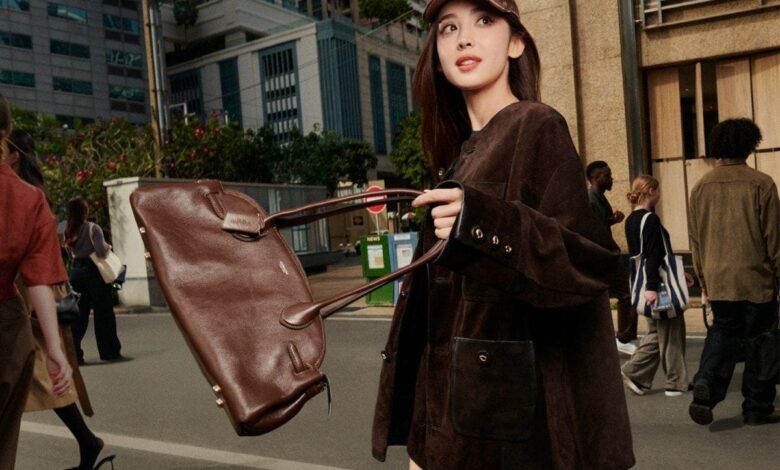Why We’re Falling In Love With Coach Again

📝 usncan Note: Why We’re Falling In Love With Coach Again
Disclaimer: This content has been prepared based on currently trending topics to increase your awareness.
Fashion rarely grants second chances. Once a brand becomes shorthand for “yesterday’s bag,” it can take decades to claw back credibility, if it comes back at all. Yet Coach has done something remarkable. It hasn’t just returned to relevance; it has reignited affection with the fashion set. And how.
Coach USA
Fashion rarely grants second chances. Once a brand becomes shorthand for “yesterday’s bag,” it can take decades to claw back credibility, if it comes back at all. Yet Coach has done something remarkable. It hasn’t just returned to relevance; it has reignited affection with the fashion set. And how.
Not nostalgia, but recognition
Consumers are not indulging in a retro revival for novelty’s sake. Gen Z’s rediscovery of Coach through TikTok unboxings and resale platforms is not about irony or costume. It is about recognition of quality leather, of careful craftsmanship and for a brand that feels grounded when so much of fashion feels disposable. Coach sits with a quiet authority that resonates precisely because it refuses to shout.
And recognition matters. In an era when many brands chase attention through oversized logos and fast-changing aesthetics, Coach has found a rhythm that feels steady and enduring. The value today’s consumer seeks is not only in the product itself but in the reassurance that it can last, both in use and in meaning.
The strategy behind the sentiment
At Tapestry’s Investor Day, Coach was presented as the group’s growth engine, with ambitions to scale to $10 billion in sales. The “Amplify” strategy: expanding into footwear, deepening global store networks, embedding experiences into retail, is all built to drive momentum. But of course figures alone do not explain the ‘why’ of consumers choosing to reconnect with Coach again.
The Fall 2025 campaign features Hollywood actress Elle Fanning, NBA All-Star Jayson Tatum, Euphoria star Storm Reid, Riverdale actor Charles Melton, Chinese actress-singer Nazha, Japanese model-actress Kōki, and K-pop artist Youngji Lee. It offers a portrait of fashion both modern and nostalgic, an aesthetic that feels authentic rather than manufactured. Directed by Camille Summers-Valli and photographed by UK’s Elaine Constantine, the campaign utilises bags accessorised by iconic NYC charms.
Culture as catalyst
During the filming of The Devil Wears Prada 2, Anne Hathaway was seen wearing a vintage Coach Metropolitan Briefcase. This classic black leather laptop bag features a buckle-flap closure and a top handle with a shoulder strap. Anne Hathaway is seen on the set of “The Devil Wears Prada 2” on August 27, 2025 in New York City. (Photo by Raymond Hall/GC Images)
GC Images
Coach is also benefiting from some cultural moments with staying power. Anne Hathaway has been seen carrying a vintage Metropolitan briefcase on the set of The Devil Wears Prada 2. The film is almost certain to be a commercial hit and a cultural replay, watched again and again on streaming platforms. To have a Coach heritage piece in that frame is to secure years of relevance in fashion’s shared memory.
The symbolism of the briefcase aligns neatly with consumer behaviour too: a surge in demand for vintage and structured bags, over 65 million TikTok views of briefcase content, and rising values on resale sites.
These placements matter. They turn a brand from something you carry into something you recall, reference, and retell. In a luxury market crowded with momentary noise, Coach has chosen cultural stages that echo.
Product as Proof
The oversized kiss-lock clutch is a perfect example. A style once seen as a relic of mid-century formality has been reimagined, exaggerated, and released into today’s market with just the right amount of wit. It sold out almost immediately and began trading on resale sites for more than its original price, the ultimate sign that scarcity and desirability had aligned.
Coach USA
For all the noise about strategy and campaigns, no brand can revive itself without products people genuinely want. Coach has found a sweet spot: designs that feel both familiar and fresh.
The oversized kiss-lock clutch is a perfect example. A style once seen as a relic of mid-century formality has been reimagined, exaggerated, and released into today’s market with just the right amount of wit. It sold out almost immediately and began trading on resale sites for more than its original price, the ultimate sign that scarcity and desirability had aligned.
The same is true in the details. Bag charms have become small cultural statements of their own, and Coach has leaned into this trend with playful symbols rooted in New York be that yellow taxis, landmarks – all icons that capture place as much as product. These charms are not afterthoughts; they are price entry points, allowing a younger consumer to participate in the brand at a lower spend, and ensuring Coach bags circulate through social feeds as well as wardrobes.
Stores as Stages
Coach’s revival has not just been about the product in hand, but the world around it. Giovanni Zaccariello, Senior Vice President of Global Visual Experience, has spoken about the transformation in store design and merchandising, from immersive pop-ups to the subtle ways display can shift perception.
One standout was the bespoke Tabby pop-up in Seoul, a space designed less like a shop floor and more like an art installation. Visitors are invited to step inside the brand’s universe, to touch and share and experience. Elsewhere, merchandising choices have sharpened the narrative: colour stories, spatial rhythm, and curated environments that make a bag feel like more than an accessory.
This matters because in an era where so much luxury is bought online, the store must now work harder. It is not simply a place of transaction. It is theatre, reassurance, memory. And in Coach’s case, it is one more point where heritage meets modernity — a reminder that physical retail still has the power to create wonder, provided the experience is worthy of the consumer’s time.
Digital Touch-points That Feel Human
Coach has also redefined how luxury plays online. Rather than relying solely on glossy imagery or abstract measurements, its website takes a consumer-first approach. One of its smartest features is deceptively simple: showing what actually fits inside each bag. Instead of imagining dimensions on a spec sheet, shoppers can see the everyday items: a phone, a notebook, a lipstick, laid out clearly, a reminder that fashion is only truly luxury when it works in real life.
Then there is the live streaming element. On the Coach UK site, video sessions link directly to staff members offering tutorials, styling advice, and product guidance. When I checked, the most recent upload had appeared only minutes earlier. That immediacy makes the brand feel alive, responsive, connected. In a market where so many “live chat” functions feel perfunctory, this feels genuinely human, like an expert talking directly to you with genuine ‘umm’s and ah’s’, not a script.
It may not make headlines in the way a celebrity campaign does, but for consumers, these details are the difference. They demonstrate that Coach understands the buying journey is not just about aspiration but also about confidence, clarity, and trust.
Sustainability on the Agenda
CEO & Brand President Coach at Tapestry (pictured here with Anna Wintour) at the front row for the Coach fashion show, New York Fashion Week (Photo by Dimitrios Kambouris/Getty Images)
Getty Images
In unveiling the new three-year growth plan, Todd Kahn, CEO and President of Coach at Tapestry, placed sustainability alongside expansion as part of the “Amplify” strategy. The ambition is clear: $10 billion in revenue, wider global reach, and a younger customer base. But Kahn also underscored that growth without responsibility is no longer an option.
For consumers, the message will matter only if it translates into visible change. Luxury has often lagged behind in demonstrating environmental progress, and Coach (like every brand) will be judged on proof, not promises. The decision to put sustainability in the spotlight is important, but it is just the beginning.
The financial backdrop shows just how delicate this balance is. Coach itself posted double-digit revenue growth in the last quarter, helping to lift Tapestry’s overall sales by 8% to $1.72 billion. And yet, the brand continues to bring in younger shoppers in impressive numbers , 1.5 million new customers in North America and 6.8 million globally over the year, the majority Gen Z and Millennials. Despite those gains, the group still recorded a net loss of $517 million, largely due to the collapse of the Capri acquisition and a write-down at Kate Spade. On an adjusted basis, earnings of $1.04 a share were slightly ahead of expectations, but the headline loss is a reminder that growth stories rarely run in straight lines.
The most daring thing a brand can do in the age of fast fashion is not reinvent itself, but to remind us why we cared in the first place.”
This is the reality of modern leadership in luxury. Consumer affection alone does not guarantee investor confidence. The challenge for Kahn is to ensure that the cultural momentum around Coach, from sold-out clutches to surging social buzz, is matched by sustainable value creation on the balance sheet and sustainable delivery in the supply chain promises kept.
Coach seems to have managed a combination in this refresh of heritage with modernity without appearing to compromise either. That balance is fragile, but powerful. It explains not just why so many new people are buying Coach, and why original fans are falling in love with it again.




